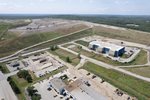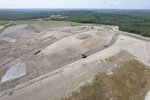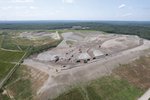Rhode Island’s Central Landfill in Johnston will eventually reach capacity. When, however, is a topic of inconsistent debate.
Whether the landfill will fill to the brim by 2034, 2036, or the …
This item is available in full to subscribers.
We have recently launched a new and improved website. To continue reading, you will need to either log into your subscriber account, or purchase a new subscription.
If you are a current print subscriber, you can set up a free website account by clicking here.
Otherwise, click here to view your options for subscribing.
Please log in to continue |
|










Rhode Island’s Central Landfill in Johnston will eventually reach capacity. When, however, is a topic of inconsistent debate.
Whether the landfill will fill to the brim by 2034, 2036, or the most recent estimate, 2040, state and local leaders must start working on future Ocean State waste management strategies.
Nobody wants a landfill in their back yard.
But trash disposal and sanitation are key elements of a civilized society.
Years ago, the town of Johnston, its elected officials and voters, made a decision to host the state’s Central Landfill — operated by Rhode Island Resource Recovery Corporation (RIRRC). They calculated that the benefits outweighed the nuisance.
On trash collection days, Johnston’s residents pack the curb with unlimited piles of junk. And trucks clean the curbs and take the town’s refuse without question.
But one day, the permitted landfill space in western Johnston, spread across 1,200 acres along Shun Pike, will no longer have space for 96 percent of Rhode Island’s refuse and recycling.
A July 2018 report published by RIRRC warned future planners that they should be looking for trash disposal alternatives by 2022. According to a spokesman for the quasi-public state agency, RI residents are now, annually, throwing less away, and RIRRC has been able to help Ocean State companies reduce their refuse.
“Rhode Islanders should not expect any decisions on post Central Landfill disposal alternatives to be made anytime soon,” said Jared Rhodes, who serves as RIRRC Director of Policy and Programs.
Why wait? The time to plan is now.
If the state’s residents can throw more away one year, and less the next year, then it stands to reason that the data is inconsistent. The numbers are down now, but they can quickly rise again.
All post-landfill options will likely face significant challenges from state residents. The permitting process will be prolonged, painstaking and lengthy, no matter which alternative planners chose to lengthen the landfill’s lifespan.
RIRRC has an annual budget of $67,700,000 and employs 142.
The agency’s highest paid employee, Executive Director Joseph Reposa, a Massachusetts resident, has refused a request for an interview by a Beacon Communications reporter (the company publishes The Johnston Sun Rise, Cranston Herald and Warwick Beacon).
Reposa should be available to the Ocean State press. He has an important job, and a $245,863.28 annual salary paid with public funds. Each Ocean State resident deserves a peek inside the planning process while we explore options for life after the Central Landfill as we know it.
Start the process now. Keep it transparent. The RIRRC should talk to the press and seek public input. Decisions regarding the Ocean State’s dump are ours to make together. Let’s not procrastinate.
Comments
No comments on this item Please log in to comment by clicking here